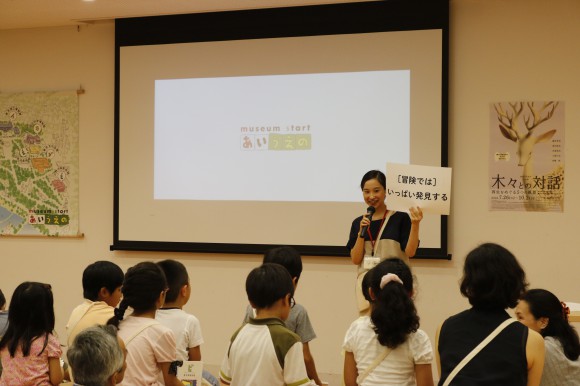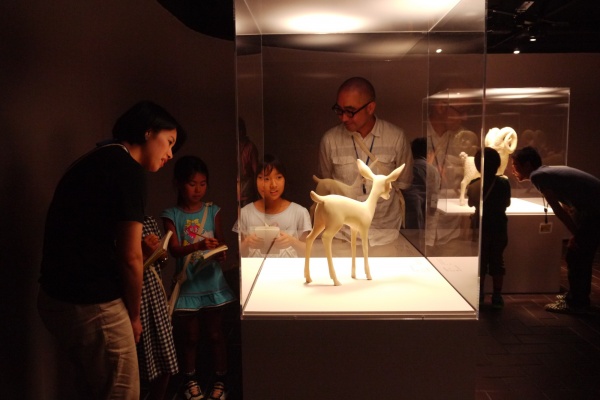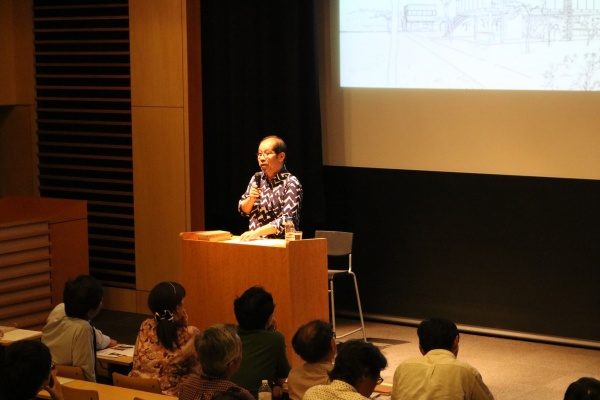
2016.08.20

「Museum Start あいうえの」のファミリー向けプログラム、「あいうえの日和」が8月20日(土)に東京都美術館のアート・スタディ・ルームで開催されました。この「あいうえの日和」は、上野公園の9つのミュージアムを楽しく冒険するコツを伝授する90分のプログラムです。
プログラムの様子はこちら→
(「Museum Start あいうえの」ブログに移動します。)
2016.08.16
2016.08.06

2016年度第一回目の「あいうえのスペシャル(旧ホームカミングデイ)」が、8月6日(土)に開催されました。
プログラムの様子はこちら→
(「Museum Start あいうえの」ブログに移動します。)
2016.08.04
2016年8月3日、今年度初めての学校向けプログラムとして平日開館コースが行なわれました。
夏の強い日差しの中上野公園に集った高校生のみなさん。今回は台東区内の4つの高校の合同授業で、生徒たちは有志で参加するという夏休みならではのプログラムとなりました。参加してくれたのは東京都立浅草高等学校、都立荒川工業高等学校、都立小石川中等教育学校、私立岩倉高等学校の4校です。
高校生23名に、各学校の引率の先生方7名、そして彼らを迎えるアート・コミュニケータ(以下、愛称:とびラー)12名と運営スタッフ5名とで、活動を行いました。
<span style=”color: #008000;”><strong><a style=”color: #008000;” href=”https://museum-start.jp/report/detail/SPjkF0mk” target=”_blank” rel=”noopener”>プログラムの様子はこちら→</a></strong></span>
(「Museum Start あいうえの」ブログに移動します。)
2016.07.23
建築実践講座の第2回目は公開講座として開催しました。
当日の様子はこちら→
オープン・レクチャーvol.6「青木淳が語る前川國男-中心のない建築:彼の目指したデザインとは?」

2016.07.22
7月22日金曜日の夕方、都内のある児童養護施設にアート・コミュニケータ(とびラー)6名とお邪魔しました。今年度からスタートした全2回のインクルーシブ・プログラム「ミュージアム・トリップ」の1回目です。
プログラムの様子はこちら→
(「Museum Start あいうえの」ブログに移動します。)
2016.07.11
よく晴れた日曜日、2016年7月10日、上野公園の青空の下で本年度のキックオフ・プログラム<ミュージアム・トリップ>が始まりました。
「ミュージアム・トリップ」とは、Museum Start あいうえので本年度より取り組み始めたインクルーシブ・プログラムです。児童養護施設やファミリーホーム、経済的に困難なご家庭のこどもを支援している団体、そして海外にルーツを持ちカルチャー・ギャップなどを抱えるこどもを支援する団体を対象に実施しています。
この日参加してくれたのは台湾慈済日本会東京支部人文教室に通うみなさん。日本に在住する外国人の方々を広く受け入れ支援している慈善団体が土日に開催している教室の夏休み特別プログラム。
この教室に通う台湾、中国、韓国、オーストリア、そして日本も含めた多様な国々にルーツをもつこどもたちが28名、その保護者の方21名と団体のボランティア・引率の方々22名 計43名のおとなたちが参加してくださいました。一緒に活動するアート・コミュニケータ(以下、愛称:とびラー)22名とスタッフ8名を加え、総勢101名もの活動体となりました。
プログラムの様子はこちら→
(「Museum Start あいうえの」ブログに移動します。)